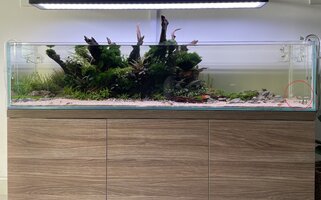Hi all,
In contrary to the behavior of the rummies in this thread, mine will just stay in the front RHS of the tank. There are cases that a few will venture towards the LHS but they will immediately return back once they notice that the rest do not follow. The only time they will swim to the other side is when I feed them. The tank has been running for about six months and the rummies have been there for last 3-4 months.
Any ideas of might be causing this behavior?
FYI, the tank is shown in the attachment and I have circled the place where they hang out.
In contrary to the behavior of the rummies in this thread, mine will just stay in the front RHS of the tank. There are cases that a few will venture towards the LHS but they will immediately return back once they notice that the rest do not follow. The only time they will swim to the other side is when I feed them. The tank has been running for about six months and the rummies have been there for last 3-4 months.
Any ideas of might be causing this behavior?
FYI, the tank is shown in the attachment and I have circled the place where they hang out.



